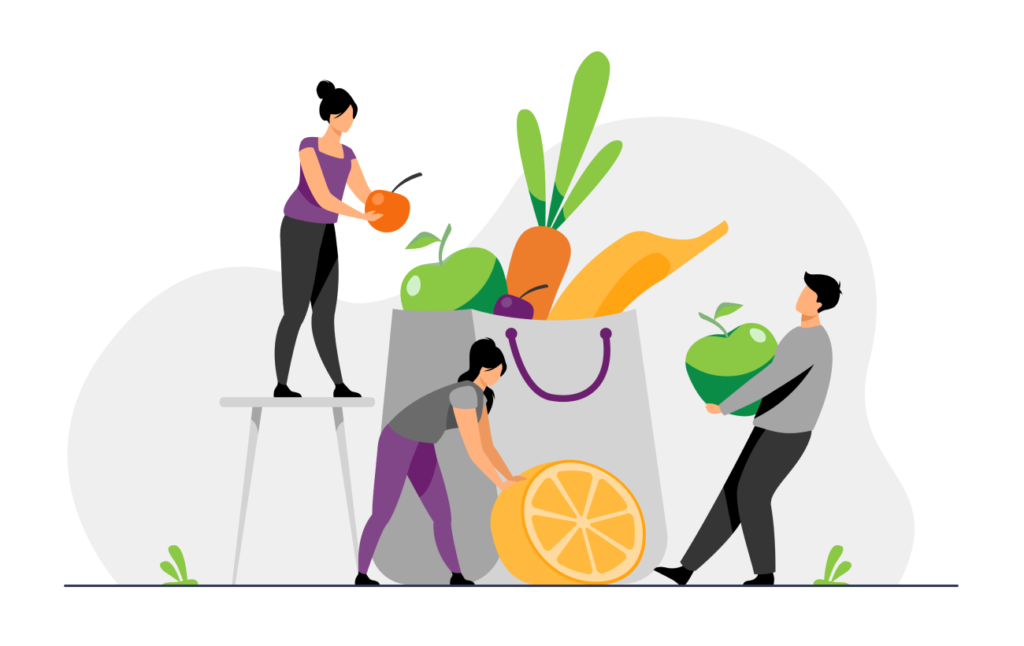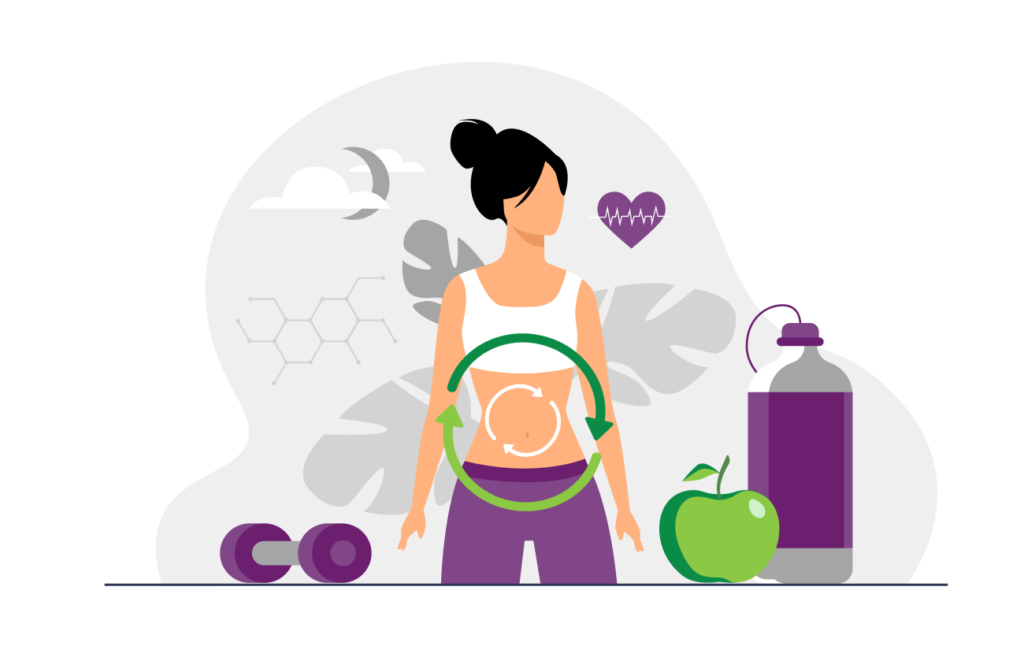14 tips and 14 foods to help you eat healthy on a budget

Is it just me, or have you noticed your grocery bill creeping up lately? Time to make some changes!
We all want to eat well as part of keeping ourselves healthy, but sometimes it seems like bailing on the healthiest grocery items to save money is the easiest fix. After all, they’re the most expensive, right?
Not necessarily! With a bit of planning and a little extra effort, there are many ways to stay on budget and maintain a healthy diet. Check out these tips and foods for ideas on how to do it.

14 Tips to help you eat healthy on a budget
- Meal plan. Having a plan is an important part of saving money. Before you shop, check grocery store specials to design your menu around healthy items that are on sale. Don’t forget to look in your fridge and pantry to see what you already have available, too.
- Shop with a list. Once you have your plan, make a list of what you need to buy and stick to purchasing only those things. Avoid the temptation to grab impulse items on endcaps and at the checkout. You’ll end up spending more and could come home with food that isn’t the healthiest.
- Use coupons, rewards cards, and apps for extra savings. Some supermarkets offer store coupons on their websites or rewards cards you can sign up for to earn extra savings. Others are offering smartphone apps to provide personalized coupons and rewards all in one spot. Check out what’s available at your favorite store to make sure you’re taking advantage of all options.
- Extra work can save you money. It’s no secret that convenience costs more, so maybe skip a few ready-to-use items. Buy a whole chicken and cut it up yourself. Pick up a block of cheese and shred or grate it on your own. Get a head of lettuce rather than bagged salad – it usually lasts longer, too!
- Buy store brands. Most stores offer their own generic versions of many popular items. Food manufacturers all must follow the same food safety standards, so you could get the same quality product at a much lower price than national brands.
- Stick to inexpensive or in-season fresh produce. Apples, bananas, oranges, cabbage, green peppers, and carrots tend to be inexpensive year-round. Berries and watermelon can be a good choice for summer but are generally priced higher in colder months.
- Pick up frozen fruits and vegetables. Round out your fruit and veggie selections in the freezer section. They’re just as nutritious, cheaper, last longer, and always having them on hand makes it easy to elevate the healthiness of your meals.
- Try to buy in bulk. Purchase a huge bag of brown rice, barley, beans, nuts, or dried fruit and grab some airtight containers to fill. These items will stay fresh for a long time and can be used in a variety of nutritious, delicious meals.
- Replace meat with other proteins. Eggs, beans, and legumes add the protein you need with a much lower price tag. Consider the popular “Meatless Mondays” approach to your menu to help reduce costs while keeping things healthy.
- Stretch out beef. Since it’s often a more expensive meat, add some black beans to your ground beef to fill more shells on taco night. Or pick up a cheaper cut like a chuck roast and put it in the slow cooker with some veggies and soup stock for a delicious dish that’s sure to yield enough for more than one meal.
- Cook large portions and use leftovers. Love healthy soups? Make a giant pot and enjoy it for a few dinners. Is stir-fry your favorite? Buy a value pack of meat, cook it up with some veggies for dinner, then package leftover portions to use for lunches for the week.
- Think about the foods you often throw away. Did you know the average American throws away $500 worth of spoiled food each year? Try to eliminate or at least cut back on quantity if you find yourself throwing away the same foods frequently.
- Stay organized. A well-kept pantry allows you to quickly know what you have on hand, so you don’t buy more of things you don’t need. It can also reduce waste and spark creative meal ideas.
- Use your freezer! There are SO many ways to make your freezer an asset in your economical healthy eating journey. Milk or yogurt about to go bad? Blend in fruit, pour into a mold, and freeze it for healthy sweet treats. Chop too many onions, peppers, or carrots? Freeze it, then toss into your next soup or sauté to save time. Make too much chili, casserole, or soup? Freeze it! These dishes keep for at least three months, and you can thaw and reheat for a quick, healthy meal.

14 Foods to help you eat healthy on a budget
- Eggs. A cheap source of protein, you can serve hard boiled for breakfast or snacks, fried and layered over beans and greens, or in frittatas and stratas.
- Beans. Black, pinto, cannellini, garbanzo, and kidney beans are all inexpensive and healthy sources of protein. Use them in soups, salads, chili, casseroles, and more.
- Sweet potatoes. High in antioxidants and anti-inflammatory properties, they can also help regulate insulin. Add to soups and stews, combine with beans and spinach for nutritious burritos, or simply roast with olive oil, salt, and pepper for a healthier alternative to French fries.
- Whole chicken. Cut up and mix with vegetables for a quick stir-fry. Simmer in sauce and serve over brown rice. Cut into strips and season for tacos. And when the meat is gone, you can use the carcass to make soup!
- Hummus. Buy a store brand or find a recipe to make your own out of canned chickpeas. Dip veggies, use in place of mayo on sandwiches, or even as a spread for flatbread pizza.
- Pasta. It’s super-cheap and can serve as the foundation of a healthy dish. Just make sure to use a recipe where vegetables make up most of your plate instead of the other way around.
- Cottage cheese. A well-known, high-protein snack often served with fruit. But try spreading it on toast in place of butter or jam or even use as a filling for omelets.
- Brown rice. High in nutritional value, has loads of fiber, and is versatile. Use as a side dish, create a casserole, make beans and rice, or mix in with your favorite stir-fry.
- Popcorn. A bag of plain kernels is incredibly affordable. You can still microwave them in a large bowl covered with a plate or in a paper bag. Skip the butter and add just a little salt for a good source of fiber that’s low in fat.
- Yogurt. Lots of protein and calcium, low in sugar if you stick to plain and add in your own fruit. Promotes intestinal health.
- Broccoli. Available fresh or frozen, you can use it on its own as a side dish or add it to salads, casseroles, and egg dishes.
- Edamame. Makes a great snack or side dish simply sprinkled with a little salt. Provides lots of fiber and protein.
- Pork loin. Low in fat and high in protein, it’s usually one of the cheapest forms of animal protein. Its neutral flavor takes on other flavors well – add some spice with chili powder or mix it up in a stir-fry.
- Tuna. Loaded with omega-3 fatty acids and low in fat, it’s not just for sandwiches. Mix with white beans for a tasty salad or add to pasta to make a casserole.

Looking for more tips on eating healthy?
Check out the nutrition guide from Foodsmart* – Browse healthy recipes and organize your grocery list. Access the nutrition guide through the CDPHP Health Hub. You can schedule a telephone or video appointment with a Foodsmart registered dietitian who can help you meet your personal nutrition goals.
*Participation with this service is dependent on plan type. Please check your member contract or call the number on your member ID card to see if you’re eligible.

 The Daily Dose
The Daily Dose
Linda Murphy
As a retired, single woman, I Very Much Appreciate all your advice and
Look forward to seeing much more from you.
Thank You!
Sarah Bowman
I’m happy to hear you enjoyed this article and hope it helps with your healthy eating plans. Thank you for the kind words!
Nancy
The tips were very helpful. Prices have soared and many of your recommendations are very good!
Sarah Bowman
I’m glad you’ll be able to put these tips to good use as you balance your healthy foods budget. Thank you!
Beverly kohland
As a senior I must change lifestyle, Very good advice. Thank you
Sarah Bowman
Happy to hear this article has inspired you in your journey to healthier food choices!